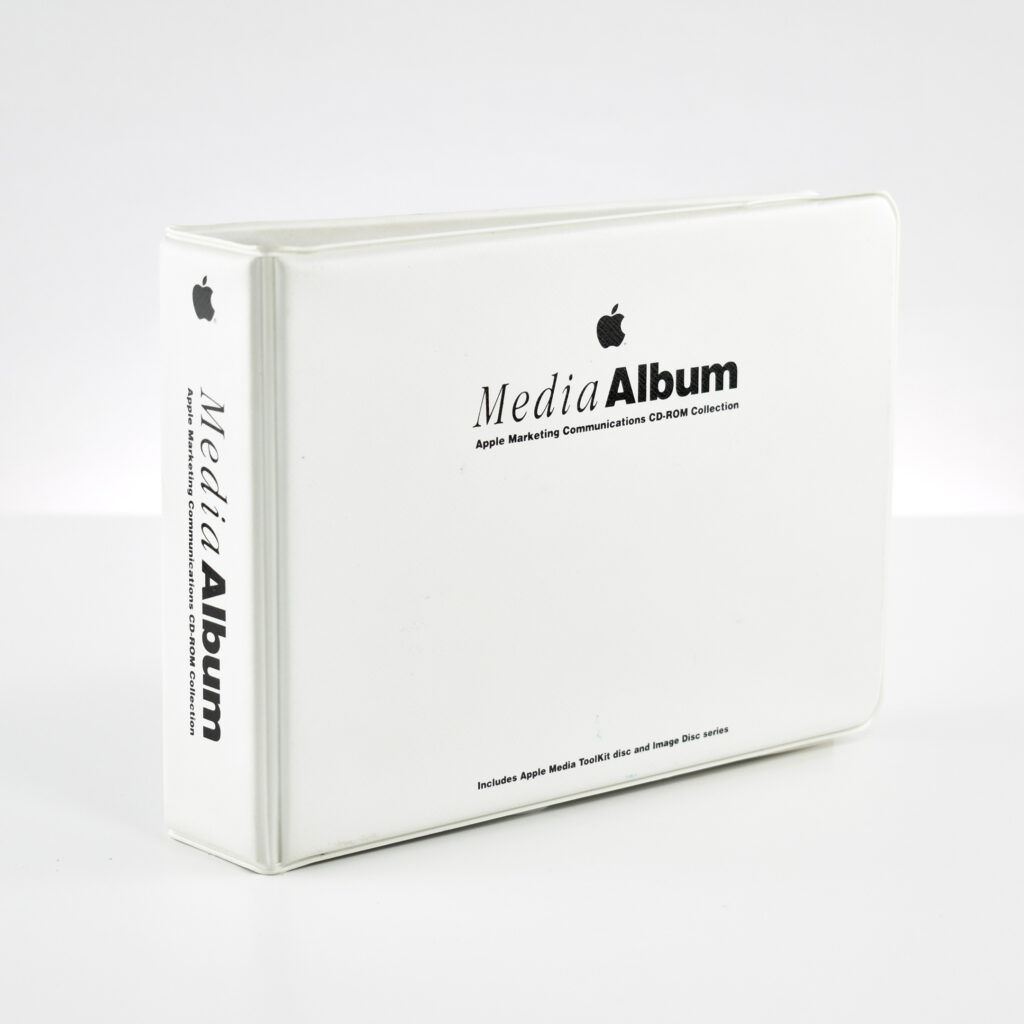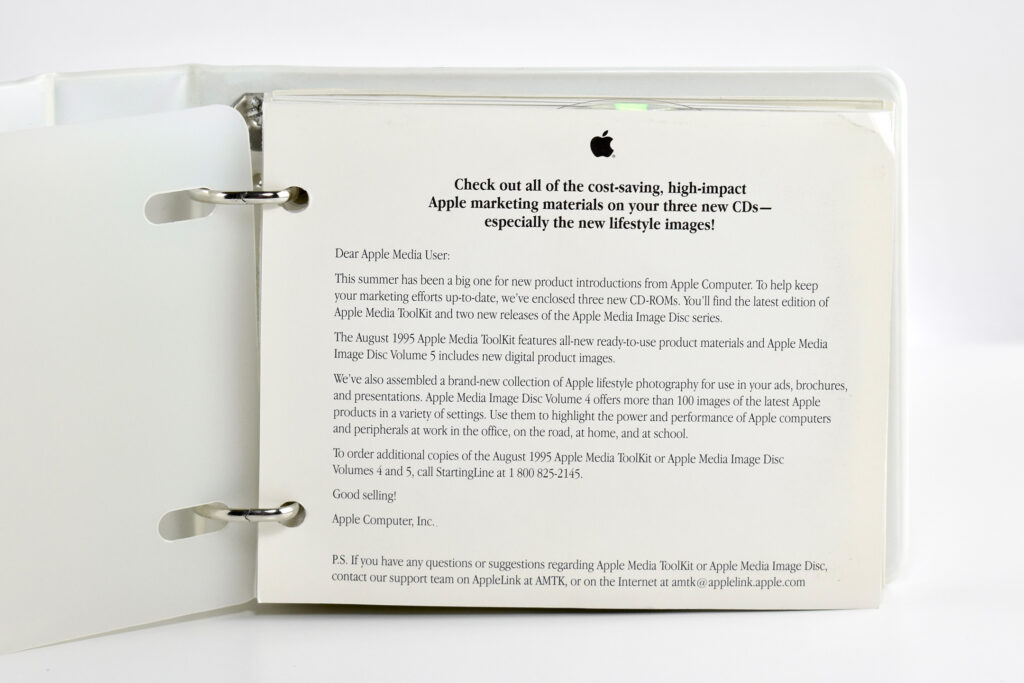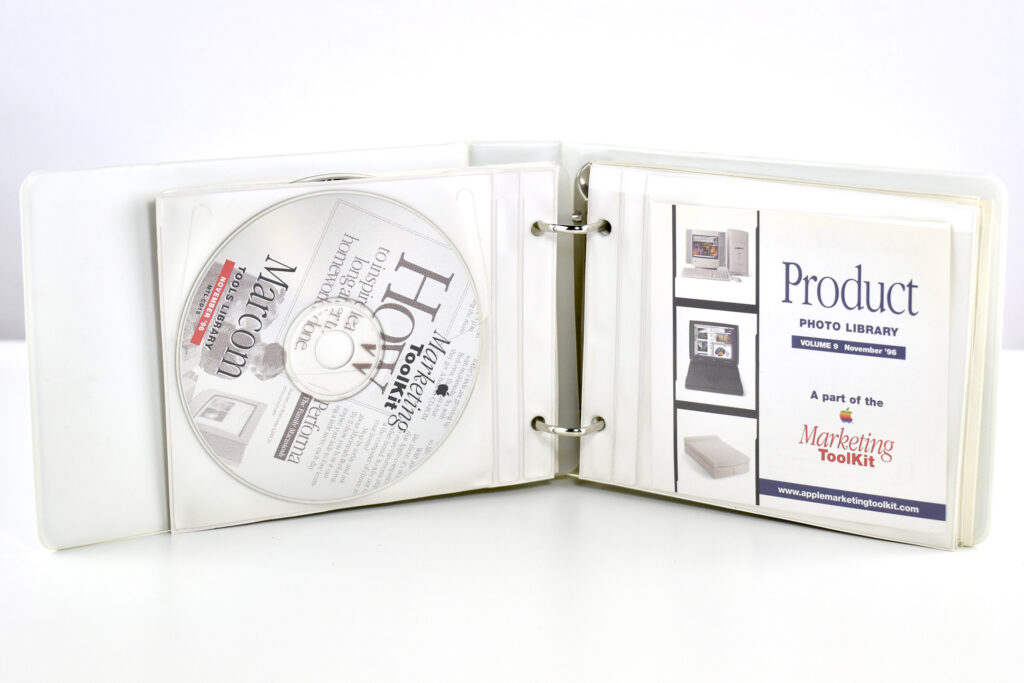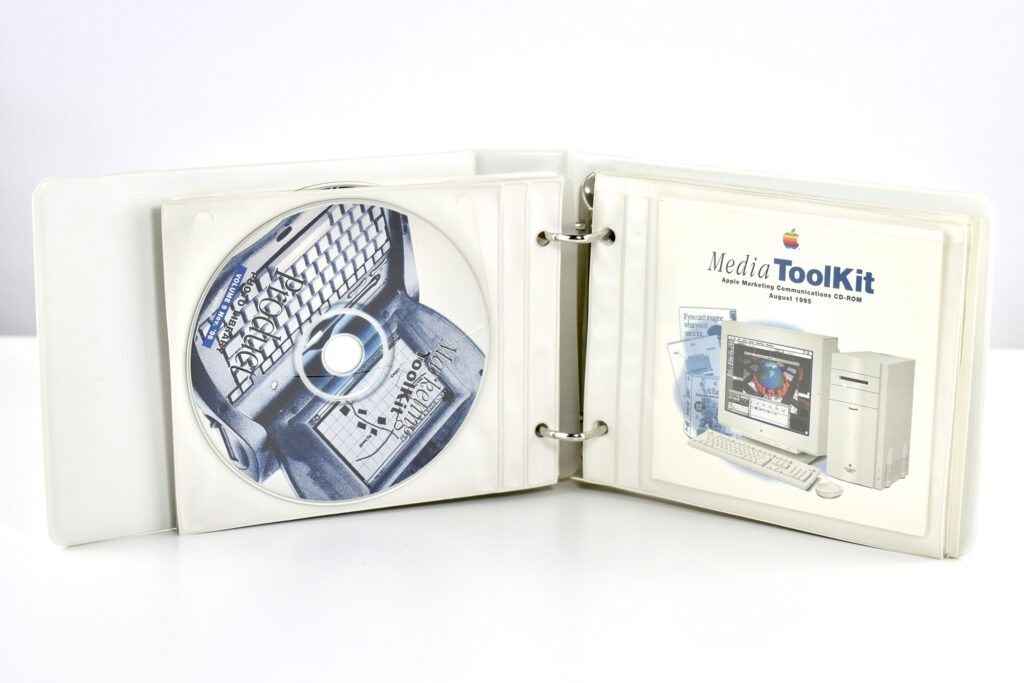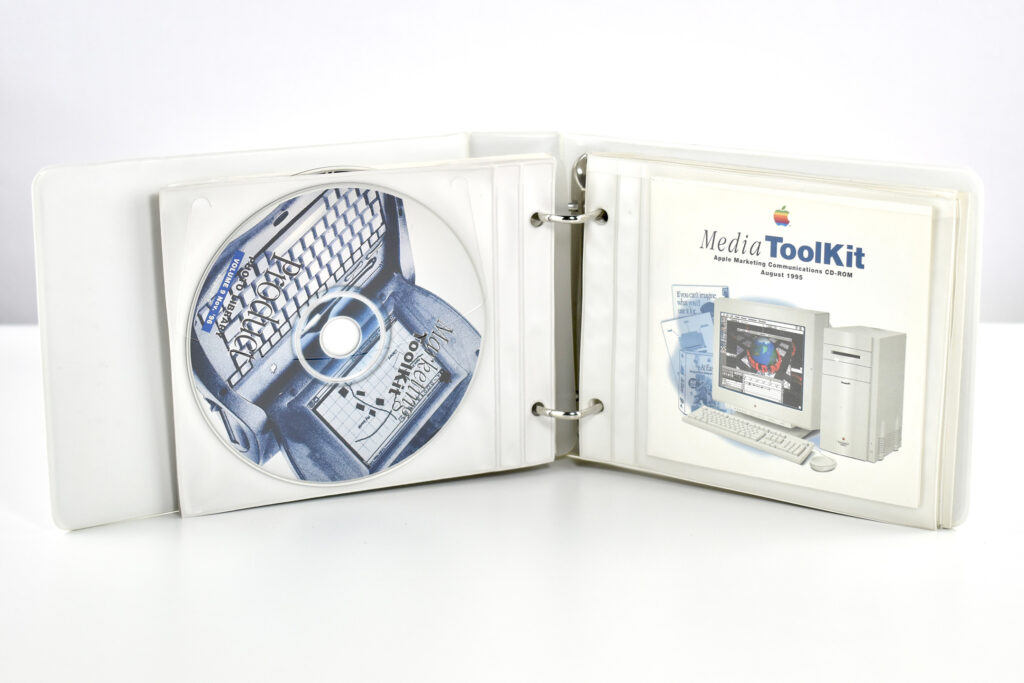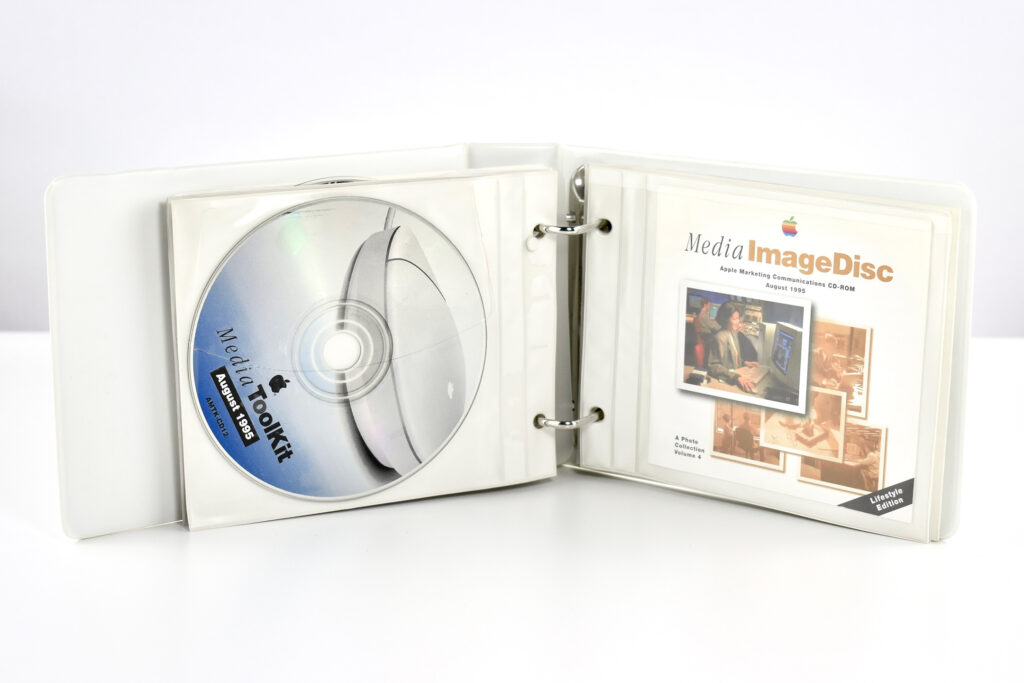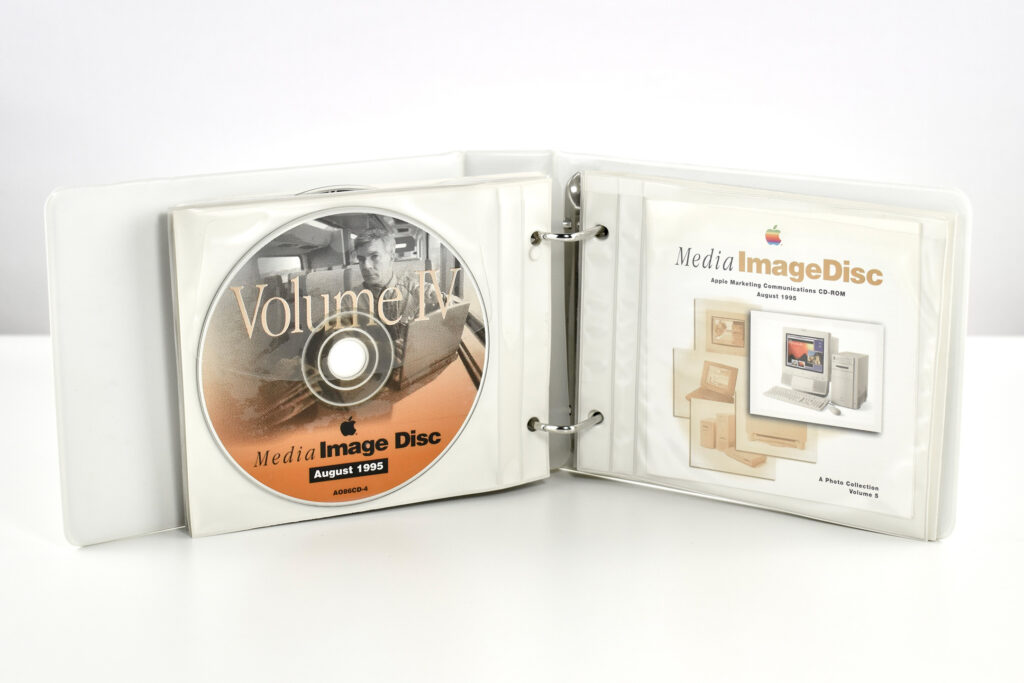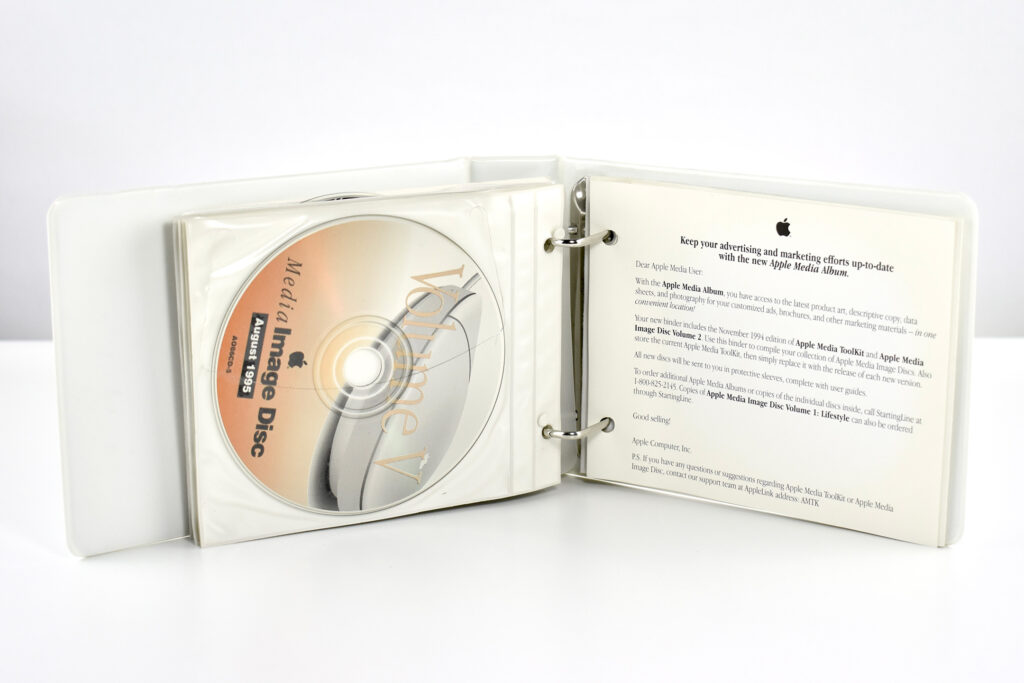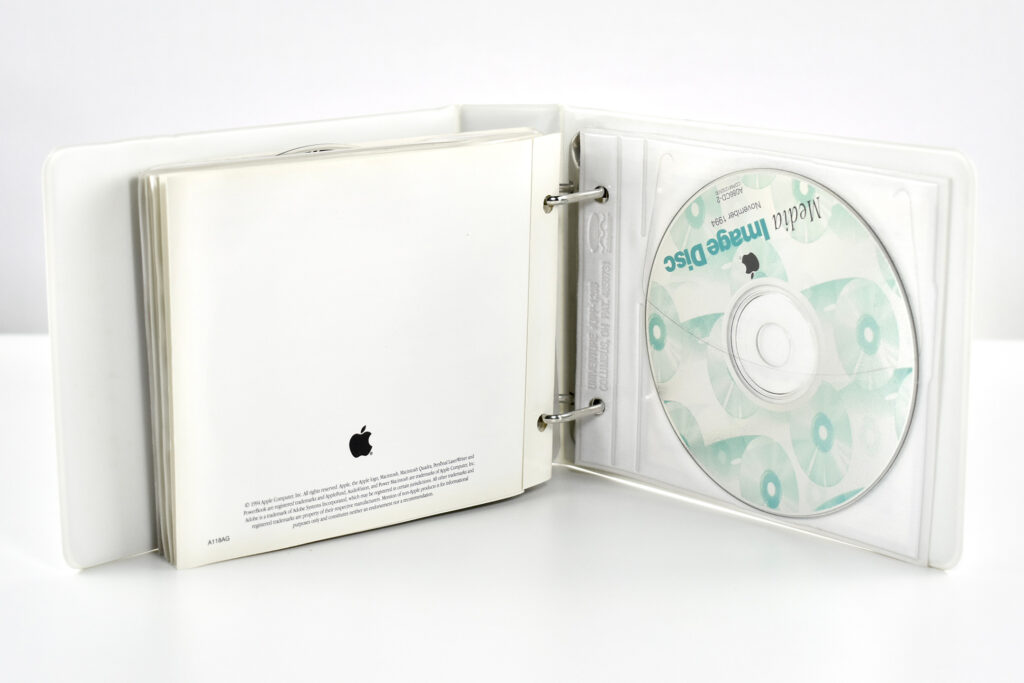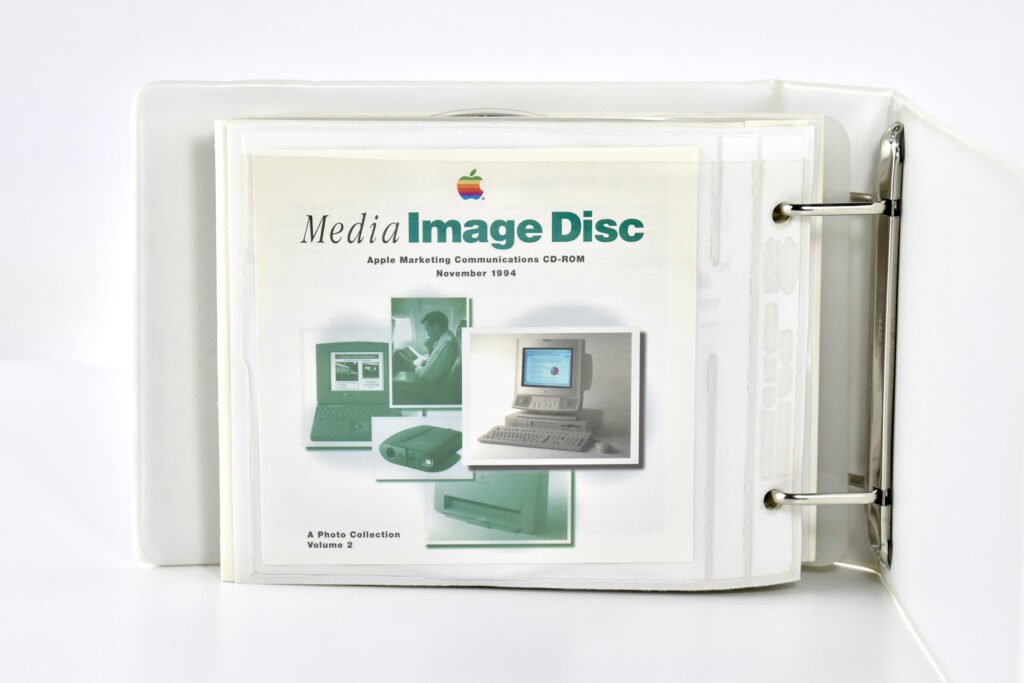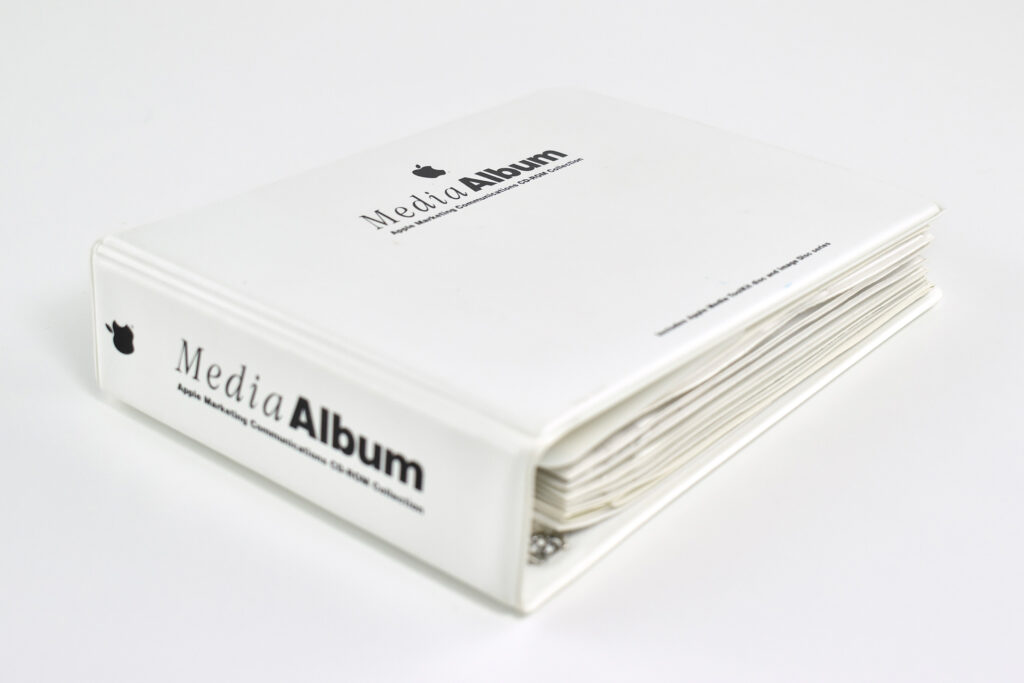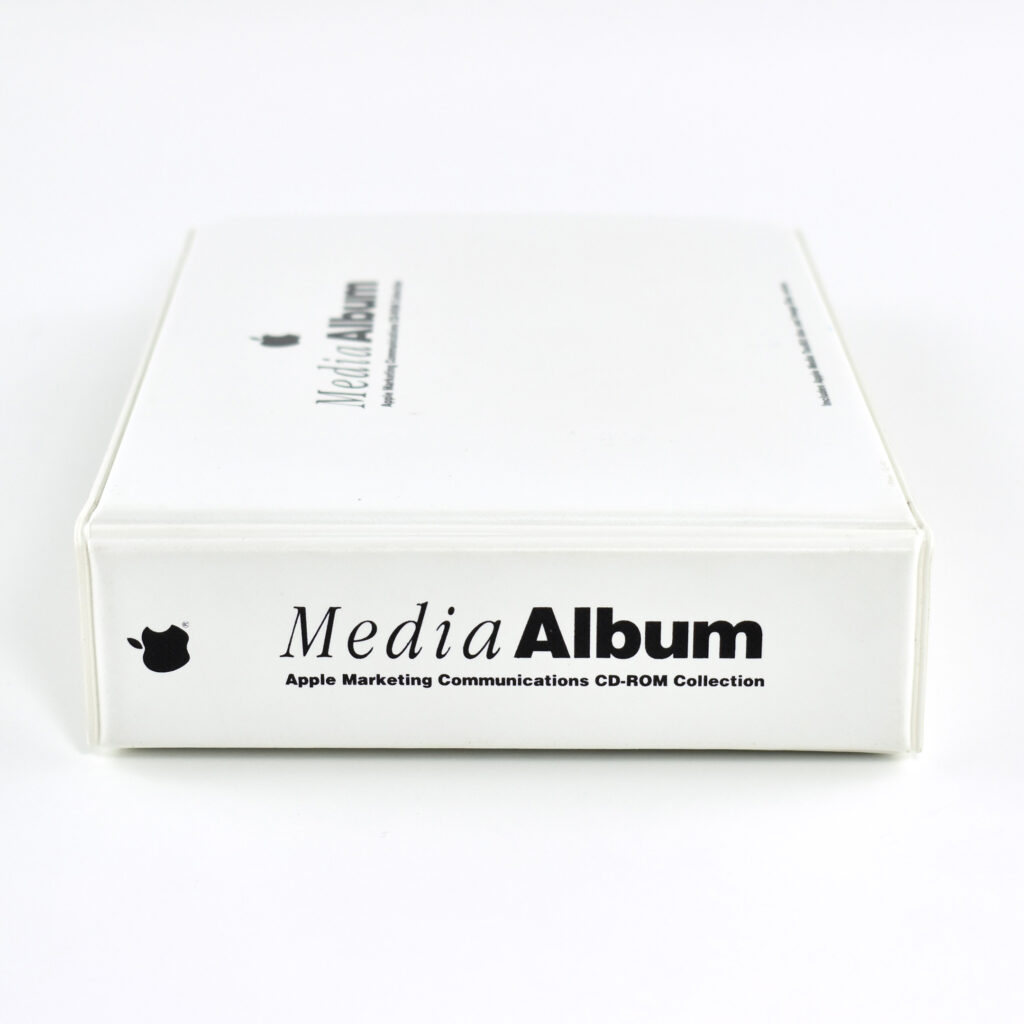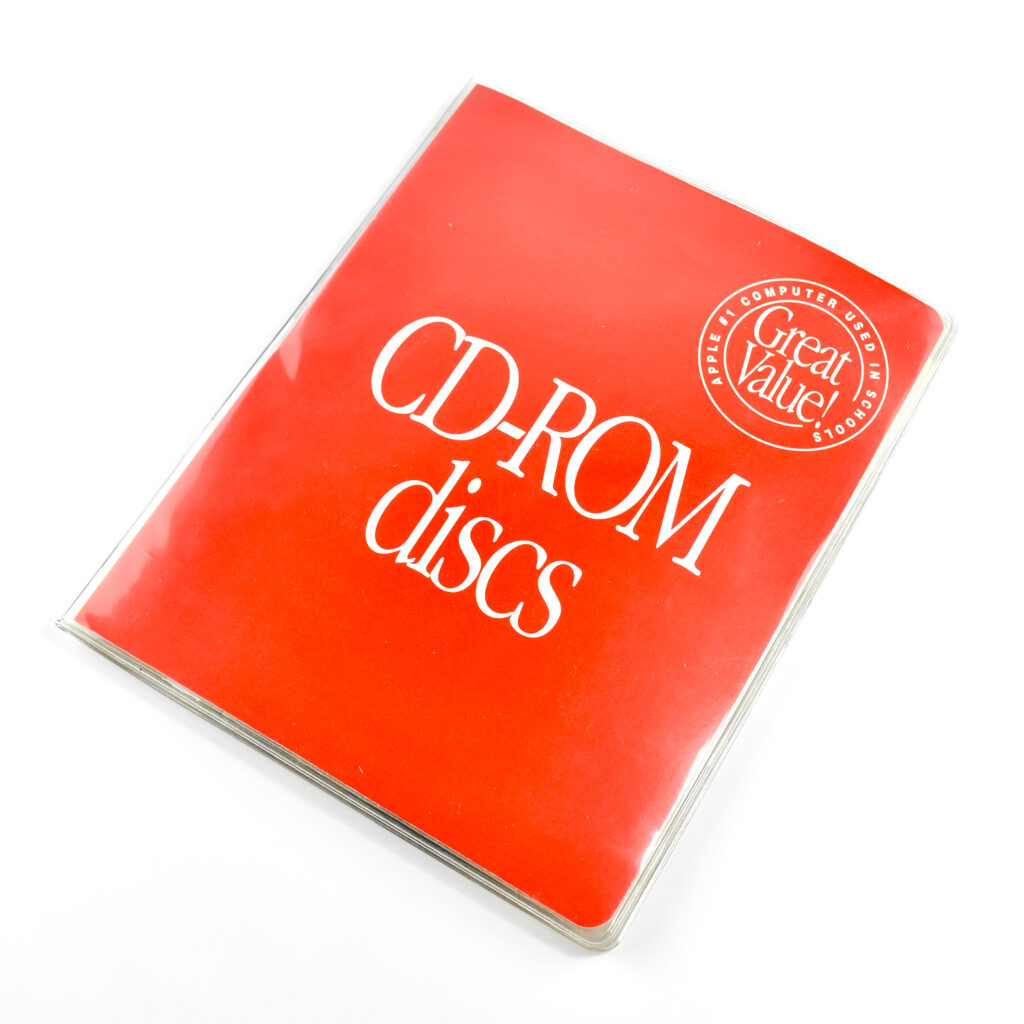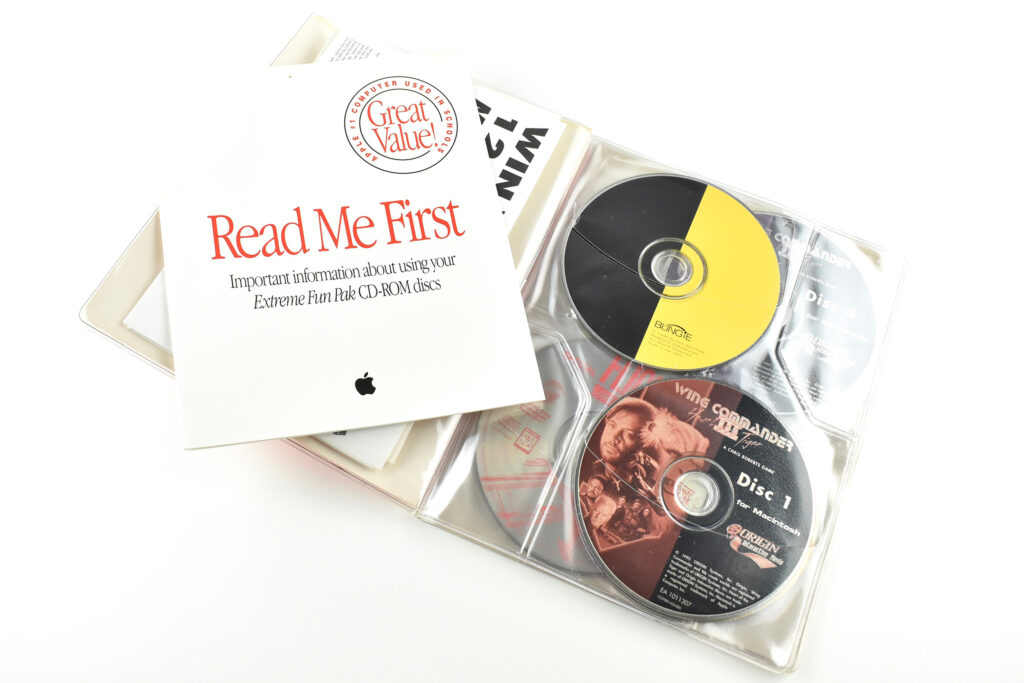This Media Album is a white vinyl 2-ring binder that measures 135mm x 185mm x 40mm. It contains 7 plastic CD pages, CD-ROMs, and 2 card stock inserts (1 folds out into 3 panels).
The interior card stock page includes the welcome message:
“Check out all of the cost-saving, high-impact Apple marketing materials on your three new CDs-especially the new lifestyle images!”
Each of the plastic CD pages contains a CD-ROM on one side and a paper insert on the other side that describes the contents of the CD. CDs include a Marketing Toolkit for the Performa line of Macintosh computers, Product Photo Libraries, Media Toolkits, and 3 Media Image Discs. All CD-ROMs are from 1994 and 1995.
The CD-ROMs contain a variety of file formats and applications designed to run on Macintosh Systems of the time (many do not open or run on modern macOS computers). Several of the images are compressed with now-defunct file concatenation formats (e.g., Stuffit). Other images appear to be in a now-unreadable Kodak PhotoCD format. However, a few folders contain JPEG images that can be opened (in 2023)—after manually appending each file name with “.jpg” so it can be recognized.
Source: Apple
